
Can you spot the lone Anglican among all those Roman Catholics? Cirio is the largest Christian festival in the world. It is spread over two weeks and is attended by two and a half million people.
By David James
Back in September, many members of our diocese met Bishop Marinez Bassotto of the Diocese of Amazonia in person as she and Dean Claudio Miranda, with Marcie Gonçalves and Joseanne Paula visited every deanery in Huron.
We have been paired with the Diocese of Amazonia for more than four years, and some of us had met Bishop Marinez as she attended our Synod. However, if we and they are to truly benefit from this relationship, we need to do more than just visit.
So let us start by asking what is the intent of the companion diocese programme?
According to the Anglican Communion website, it is to encourage us to pray for one another, to learn and share one another’s joys and concerns, and to participate in face-to-face spiritual and material exchanges. This programme is encouraging us to get to know our fellow Anglicans around the world so that we can put more meaning into the word “communion”.
Most, if not all of the Canadian dioceses, have partners in the third world, often in Africa, but Huron is the only one with a partner in South America. One advantage of that is they are close to our time zone, which makes face-to-face communications easier.
Bethlehem on the Amazon
On October 9, a group of nine members of Huron Diocese travelled to the City Of Belem (Belem is the Portuguese word for Bethlehem) in Brazil to visit with our new Anglican friends there. We were lead by the Venerable Graham Bland who had lived and worked there in the past, and who speaks Portuguese. Apart from Graham none of us had visited Brazil before and truth to tell we did not really know what to expect.
Even though Belem is a city of one and a half million people with an international airport, there are no direct flights there from Toronto, so we flew via Sao Paulo, which makes for a much longer journey. We were greeted at the airport by Dean Claudio and other members of St. Mary’s Cathedral congregation, and after hugs, we are loaded into cars for the drive to the Cathedral.
It was by now late afternoon, and a feast had been prepared for us. We met more of the Cathedral congregation, including Bishop Marinez who arrived with her two daughters.
We were treated to a delicious meal of soup followed by chicken, rice and salad all washed down by tropical fruit juices. This was a taste of things to come, as the food was excellent throughout our visit.
After supper we walked over to a nearby square where a cultural event was taking place with music and dancing. We watched for awhile, and then returned to the Cathedral where we split up to be taken to our various billets.
Our hosts had decided to have us stay at the homes of members of the congregation. I am to stay with Gladys Skeetes, whose family originally came from Barbados. She is a retired lawyer, and I was pleased to find out she speaks good English.
The story of Cirio
I need to tell you about the Cirio. Before this trip I have to admit that I had never heard of it. It is the largest Christian festival in the world, and is recognized by UNESCO as a world heritage cultural event. The festival is spread over two weeks and is attended by two and a half million people. Our visit has been timed to coincide with the start of the festival, and we will be observing and participating in some of the events. This year is the 226th Cirio, the first one having been in 1793.
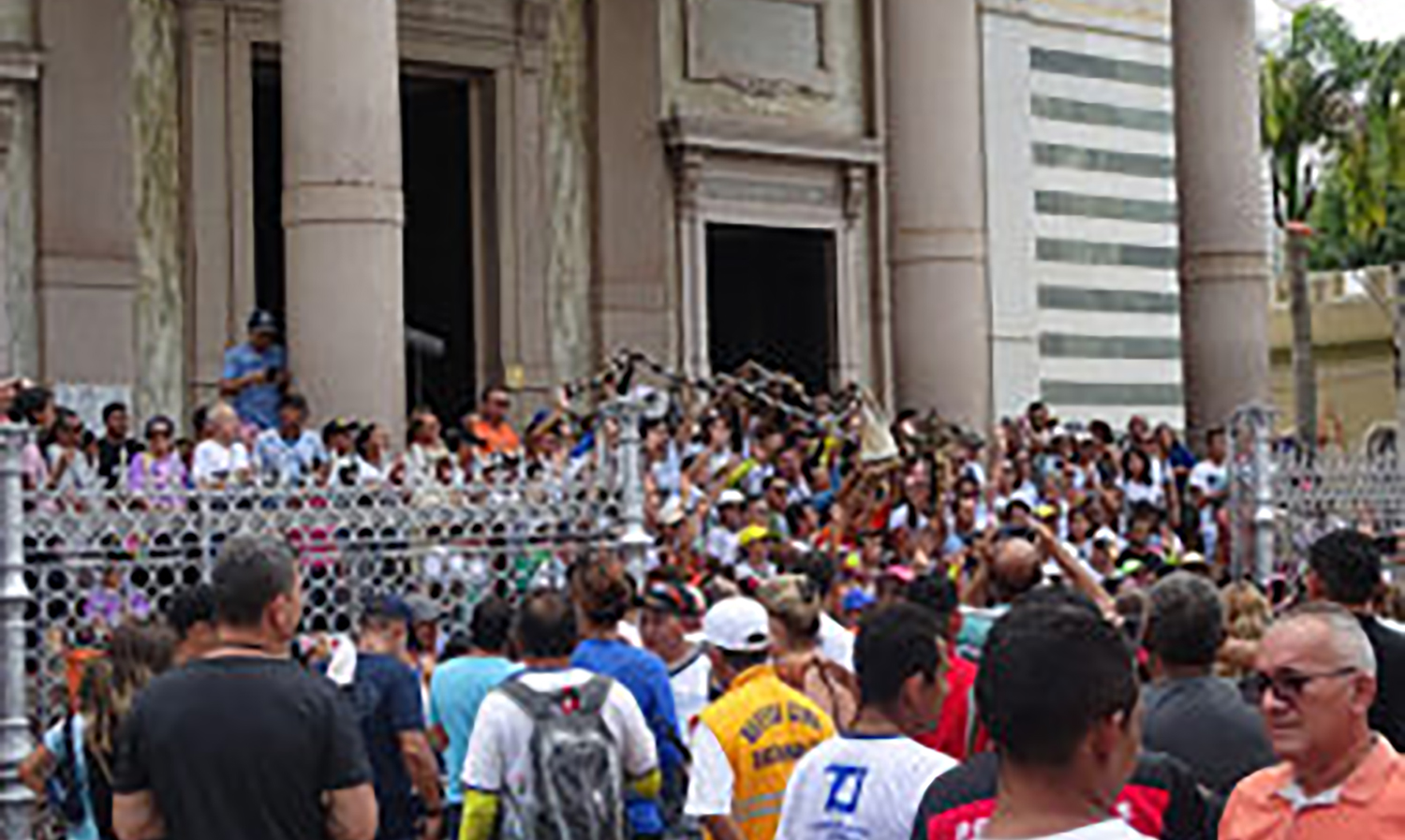
Waiting for the Cirio in front of the Roman Catholic basilica.
Central to the celebration is a small statue, slightly less than twelve inches tall, of Mary the mother of Jesus holding the baby Jesus. The statue was found by a fisherman on the bank of a stream in what is now Belem. It is believed to be of Portuguese origin. The fisherman liked the statue, and took it home with him. The next morning it had disappeared, and he later found it back on the stream bank. This was repeated a couple more times, so the fisherman built a small shrine on the bank of the stream and placed the statue in it. Word spread that praying at this shrine would promote healing.
Forward 93 years, and the Governor of the state of Para fell ill, and ordered that the statue be brought to his palace. He was warned that it likely would not remain, so he posted an armed guard on it. The next morning the statue was back at the shrine. The Governor recovered from his illness, and in gratitude ordered the first Cirio, during which the statue was processed through the streets and returned to the shrine. That was 1793, and the Cirio has been held every year since.
The small shrine has been replaced by a magnificent basilica, and the one procession has grown into many, including one on the river. So we started our first full day in Amazonia with a visit to the basilica. It is a magnificent Roman Catholic church, reminiscent of many in Europe. After a brief tour we went next door to the inevitable gift shop where replicas of the statue could be purchased along with numerous other Christian icons.
Then on to a Centre set up to welcome the many pilgrims, many of whom have walked long distances to get there. Free meals are served, and there are people to tend to sore feet; you can even get free physiotherapy.
We were welcomed in song and treated like celebrities. From here we journeyed to the Roman Catholic Cathedral, another magnificent church, adorned with beautiful art work. The statue is brought here during the main procession.
Sightseeing the city
A break for lunch and we were taken to visit a museum which started life as a monastery, became a notorious prison for 150 years and more recently has been converted into the museum. Many precious and semi-precious stones are on display, all mined in the local area.
From here to the market down on the water front. We were told it is the largest market in South America. It is divided into sections, with clothes and accessories, then food, and finally miscellaneous where you will find arts and crafts to interest the tourist. One elderly lady was selling herbal cures for whatever ails you. She spots our group, and proffers a small bottle, and not knowing the English word Viagra, demonstrates with her hands quite clearly what it can do for the men in the group. We move on.
After the jostle of the market we took a quiet walk along the water front, exploring some more shops and restaurants, and finally after a long enjoyable day returned to St. Mary’s for supper and thence to our billets, feeling more like tourists than pilgrims.
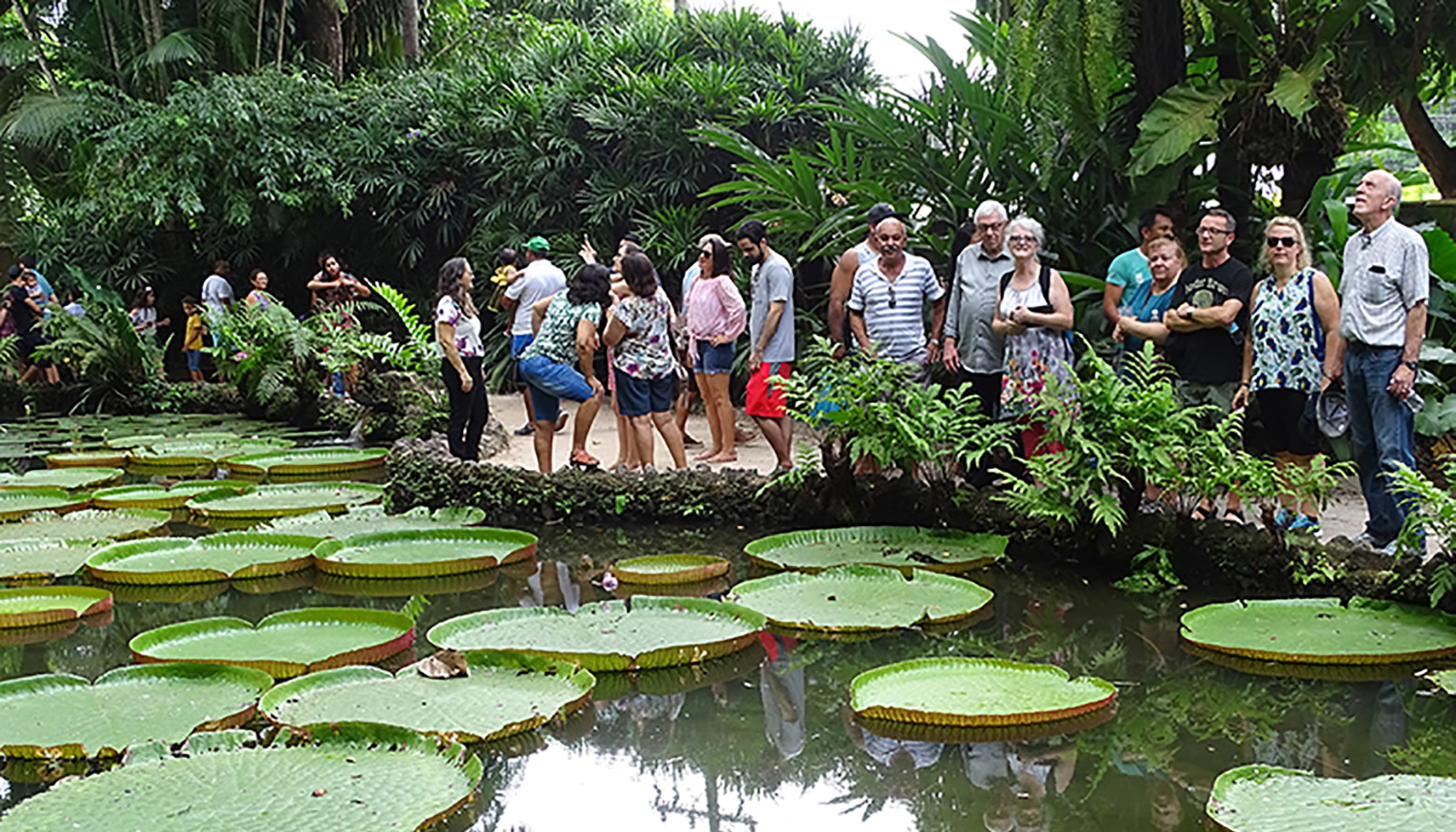
Our group by Victoria Lillies
On our third day our hosts showed us a softer side of their City. We started with a visit to the Emilio Goeldi rainforest museum − a combination botanical garden, small zoo and museum depicting the history of man, and a whole section on environmental responsibility. There have been some important environmental initiatives emanating from this part of Brazil.
After lunch we visited an eco-park called Mangal das Garcas, which is more formally laid out, and also contains a museum dedicated to the history of the Brazilian Navy. A tower in the park gives excellent views of the City of Belem.
That evening our hosts took us to a restaurant known for specializing in local dishes. We were happy to sample a variety of new foods, none of which were too spicy or too strongly flavoured for our taste buds. It was really a party atmosphere, especially as we had been joined by some of the younger, university aged, members of the Cathedral congregation, most of whom spoke good English, and were therefore able to interpret the menu for us.
The procession of Cirio
The next morning we were up before dawn, and we made our way, along with hundreds of thousands of others, to the river, where we boarded a large boat for the first procession of the Cirio, on the river.
We left the dock at 7.30 am and headed down stream to a location where hundreds of boats had gathered. The statue had been removed from the Basilica and was now on board a Brazilian naval corvette bedecked with flowers and protected by an honour guard. At nine o’clock the corvette set sail for Belem surrounded by boats of all shapes and sizes. There were fireworks going off at various locations as we passed by. We sailed back to our starting point, where the corvette slowly made a bypass for all the folks waiting along the river front.
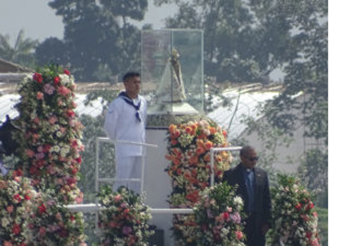 That evening the statue was processed through the streets of Belem, and more than two million people gathered to either process with the statue, or to watch it go by. We joined the crowds of onlookers. Experiencing an event like that is not something I would have missed, but having done it, is not something I would care to repeat. When you are in that large a crowd, you have limited control of where you are going, as you get carried along with the masses. We did not stay that long, and did not see the statue go by.
That evening the statue was processed through the streets of Belem, and more than two million people gathered to either process with the statue, or to watch it go by. We joined the crowds of onlookers. Experiencing an event like that is not something I would have missed, but having done it, is not something I would care to repeat. When you are in that large a crowd, you have limited control of where you are going, as you get carried along with the masses. We did not stay that long, and did not see the statue go by.
In the Amazon delta
The next day was Sunday, so it was breakfast at the Cathedral followed by the Eucharist. Graham preached in Portuguese, but gave us a translation of his sermon so that we could follow along. The small choir accompanied by guitar were really good and made the service a most joyous affair.
The rest of the day was quiet time during which some of us explored a local park where many vendors had set up their stalls. In the evening we visited the parish of Holy Trinity for another service, this time with Bishop Marinez preaching.
Monday morning and we were going on another boat trip, this time to one of the many islands in the Amazon delta. These islands are quite large, mostly covered in jungle, but with homes, and the odd restaurant or small business along the shoreline. Some of the larger ones have a few roads to take you to the interior of the island.
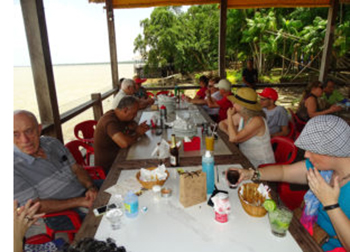 About 40 of us boarded the boat, as a large contingent from the Cathedral has joined us including the younger crowd. It was a quick trip across the river and then the captain took us up a channel between two islands. It was perhaps 60 metres wide, with a few homes dotted along the banks. The only transportation for the people living there is boat. We docked and explored a small business which produces local chocolate which we were invited to sample. We stretched our legs, explored their small shop and looked at the tropical trees and flowers growing in the neatly kept grounds.
About 40 of us boarded the boat, as a large contingent from the Cathedral has joined us including the younger crowd. It was a quick trip across the river and then the captain took us up a channel between two islands. It was perhaps 60 metres wide, with a few homes dotted along the banks. The only transportation for the people living there is boat. We docked and explored a small business which produces local chocolate which we were invited to sample. We stretched our legs, explored their small shop and looked at the tropical trees and flowers growing in the neatly kept grounds.
Back on the boat and we progressed further along the channel until the captain determined it was narrow enough, perhaps 20 metres, and he turned around and we headed back out to the main river to a restaurant with a nice view across the river to Belem. After lunch we headed back to Belem and the Cathedral. We had said good-bye to our billet hosts as for the next few days we would be staying at a retreat. No longer the tourists, we were going to be put to work.
The Mount Tabor retreat
The Roman Catholic Retreat Centre is on the river further downstream. A very nice facility with a large conference room, a dining room, a number of bedrooms and nice landscaped gardens. Our facilitator would be Father Marcello Barros, a Benedictine monk who is an exponent of liberation theology. When asked to explain liberation theology he said you don’t explain it, you live it!
We spent the evening in quiet reflection and worship. A number of our Brazilian hosts had joined us for the retreat, including Beatrice, who is 95 years young, and as sharp as a tack.
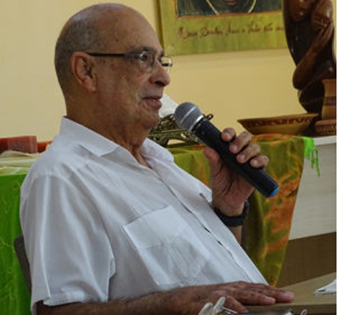 The next morning we started our studies with a reading from the book of Revelation. Father Marcello liked us to work in small groups, and to also spend time in quiet reflection, coming together to share our thoughts with one another. In the afternoon he posed some challenging questions including “What are our duties in mission and in faith?” He said we must learn to live with God here and now and take our faith in God beyond the church. The goal of our retreat is to discern where God is calling both Huron and Amazonia to go in the future. Father Marcello asked us to share a very personal view of our relationship with God, and to put that into the context of the wider church.
The next morning we started our studies with a reading from the book of Revelation. Father Marcello liked us to work in small groups, and to also spend time in quiet reflection, coming together to share our thoughts with one another. In the afternoon he posed some challenging questions including “What are our duties in mission and in faith?” He said we must learn to live with God here and now and take our faith in God beyond the church. The goal of our retreat is to discern where God is calling both Huron and Amazonia to go in the future. Father Marcello asked us to share a very personal view of our relationship with God, and to put that into the context of the wider church.
After supper we watched a video on an organization to promote peace and social justice around the world, and then we relaxed and went for a walk along the river front before retiring for the night.
The next morning we started by reading the seven letters to the churches as described in chapters two and three of Revelation. Father Marcello pointed out that most of the letters are heavily critical of the conduct of the churches, with perhaps the exception of the church in Philadelphia. He asked us how our own church is similar to that church. Some of us suggested we have some similarities, but also see ourselves in the churches of Ephesus and Laodicea as well.
Our reason for studying these texts was that we were to write an eighth letter to our own churches This was to be a single letter addressed to the churches in Huron and Amazonia, to encourage and invigorate our members and to express to them the confidence we have in them. We studied in small groups interspersed with quiet reflection and then came together in two groups, one English and one Portuguese to draft our letter in each language. Finally we combined the two, initially in Portuguese, and then the bilingual members of our group worked on the English translation. The intent was that the letter be published on the Huron website as well as being shared around Amazonia.
Father Marcello also reminded us that as followers of Christ we are called to take a leadership role in the protection of our natural environment and the establishment and maintenance of social justice.
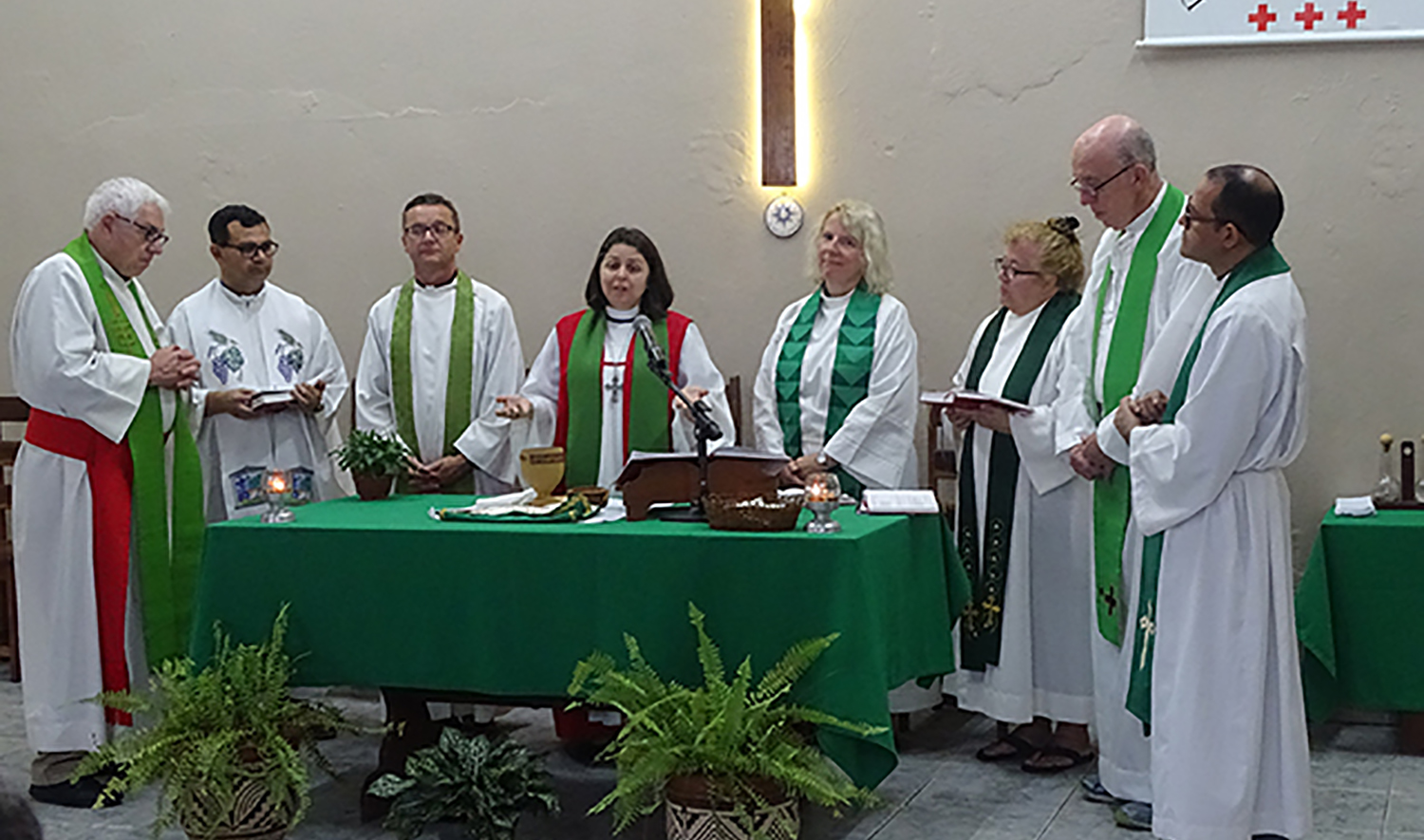
A better understanding of what the Anglican Church in Amazonia looks like
We also participated in two more Eucharists while on the retreat. The first was at a chapel at the retreat and was quiet, contemplative and rejuvenating, while the second was a joyous affair at St. Luke’s parish to celebrate their 50th anniversary. That one was followed by another delicious meal prepared by the ladies from St. Luke’s.
Our final day in Brazil was more relaxing as our hosts took us out to explore the local market and shops. Although it was hot, it was good to get the exercise, and a number of us found good souvenirs to purchase for our friends and relatives at home.
Final reflections
So as we prepared to leave our many new friends I reflected and posed these questions: What have we achieved from this visit?
New friendships and a strengthening of existing ones.
A better understanding of what the Anglican Church in Amazonia looks like.
An appreciation of the challenges faced by the people of Belem in their daily lives.
A view of the NE corner of Brazil, its climate and its people.
And then I asked: What do we hope will result from our visit?
Spreading the word in Huron about our companion Diocese and fostering a desire for greater involvement by more people in Huron.
Closer relationships between congregations in Huron and parishes in Amazonia, perhaps a twinning of churches, or between a Deanery in Huron and a parish in Amazonia.
Perhaps shared outreach projects.
More visits to further understanding.
And prayer. Bishop Marinez has asked for the prayers of the people in Huron as they look at four years with a right wing president who has a reputation for intolerance.
For more information, or to get involved, please contact the companion diocese committee which meets regularly. If you would like a power point presentation and first hand anecdotes from one of the team on the trip, I am sure it can be arranged.
David James is a parishioner of Grace Anglican Church, West Lorne.
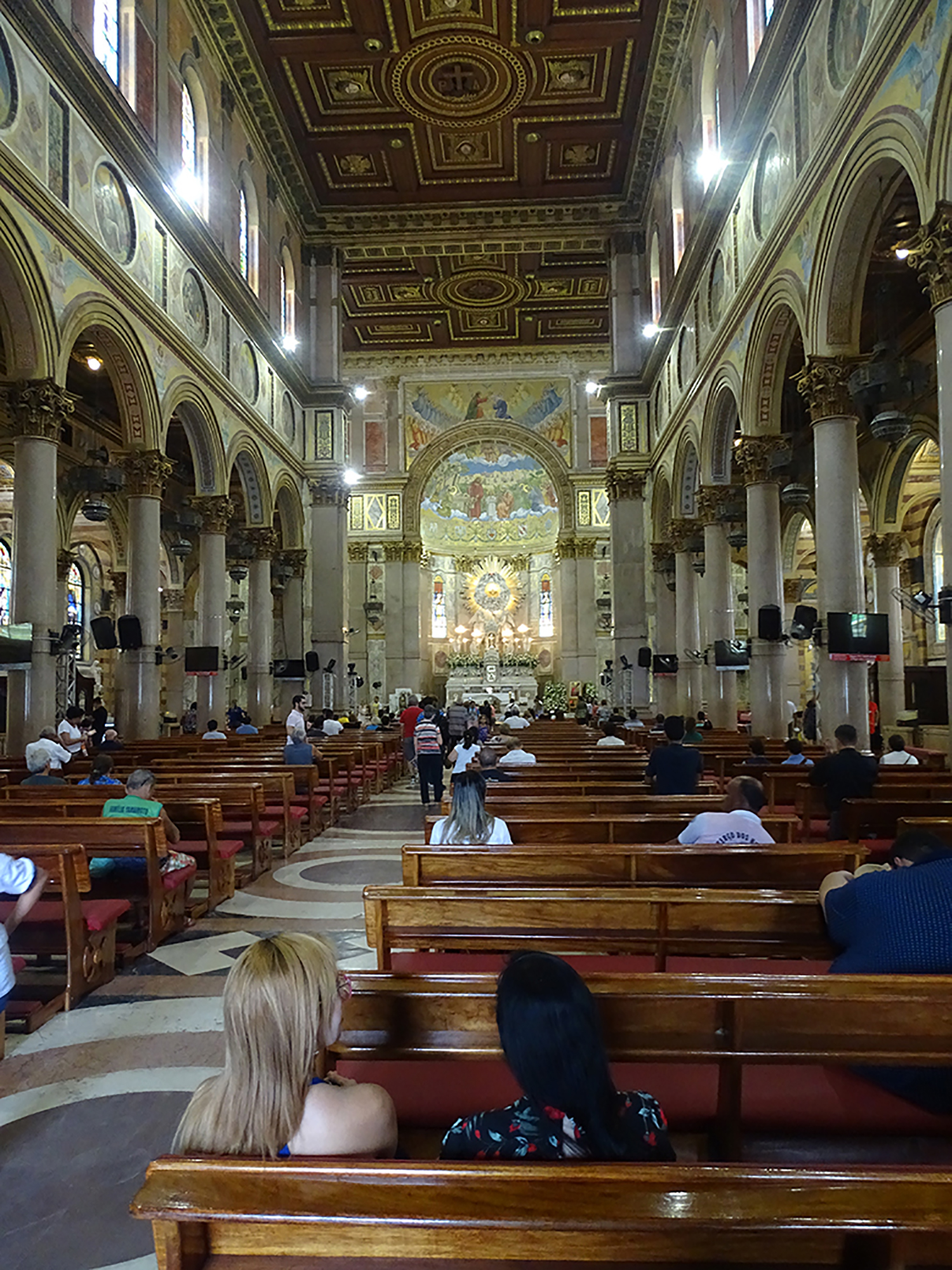
Inside the basilica where the statue resides
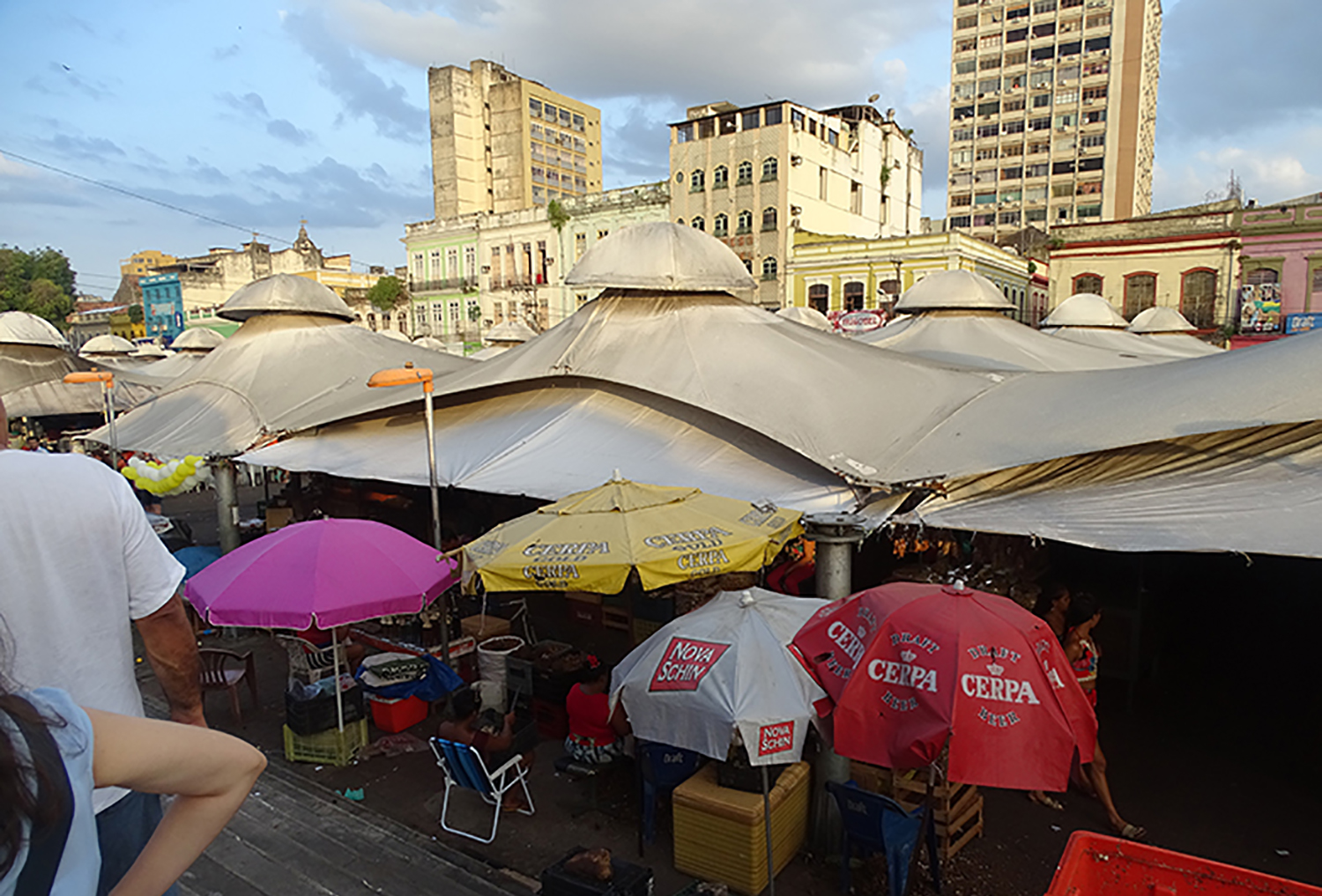
The market on the water front
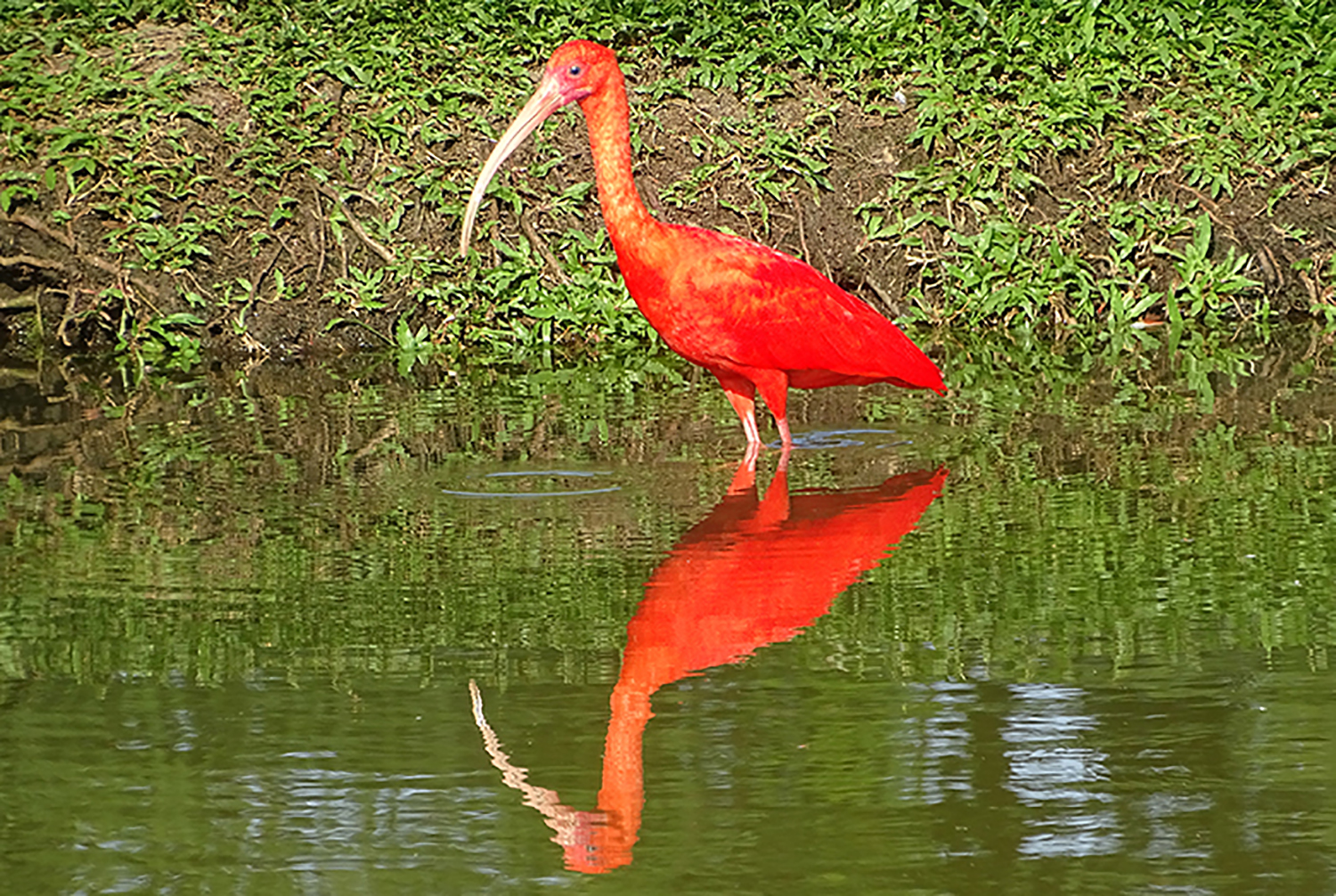
A scarlet ibis
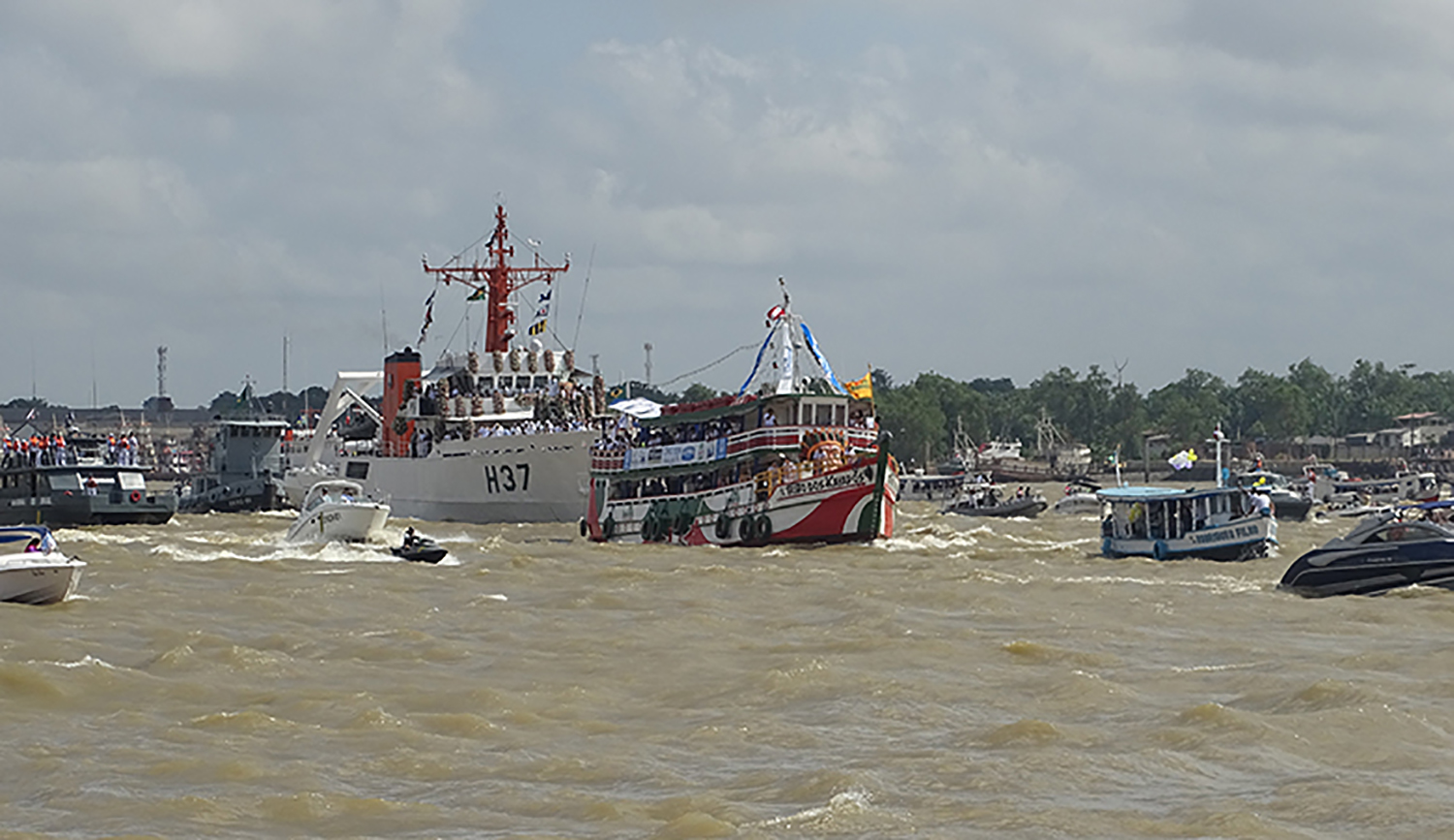
The corvette that carries the statue
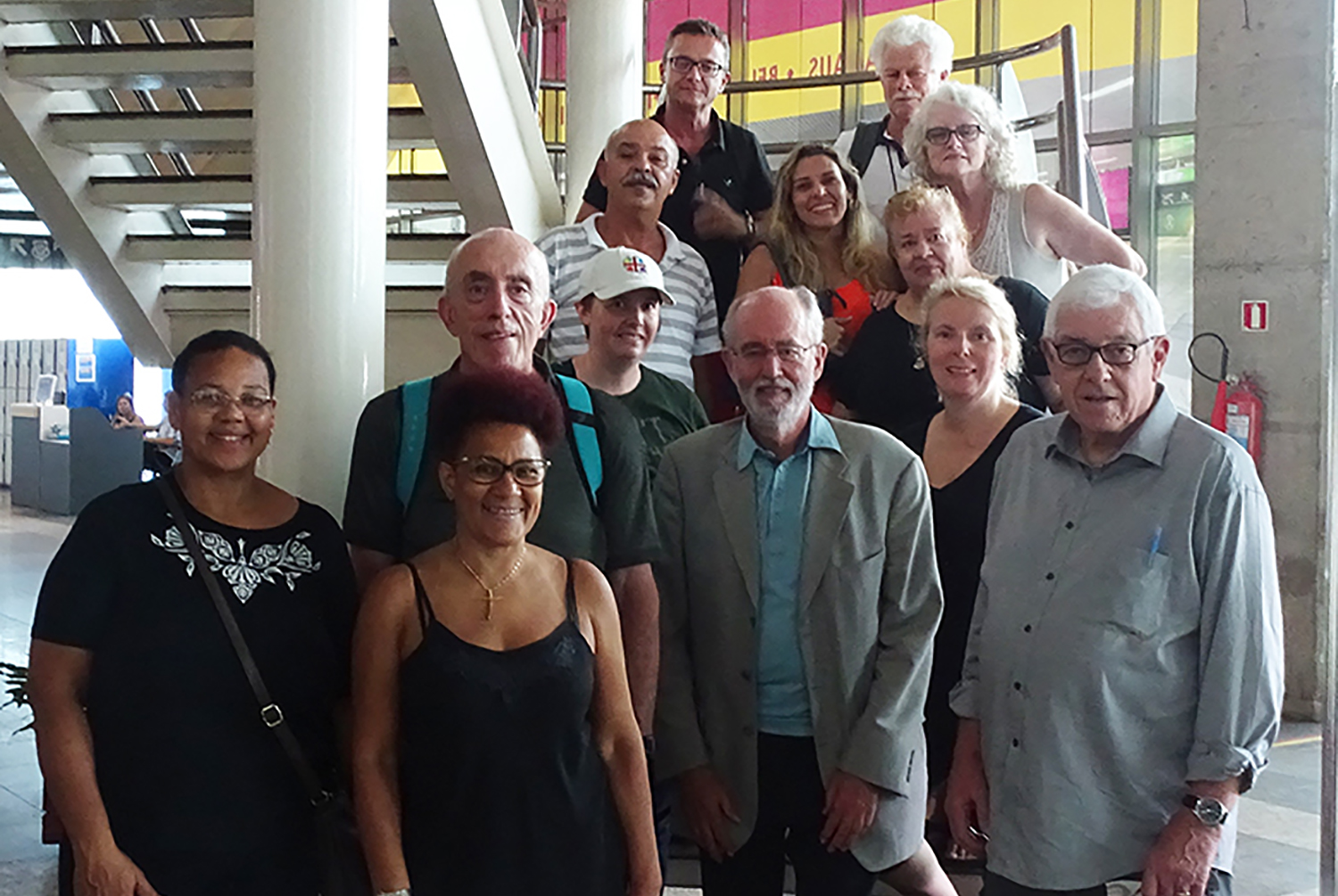
The final group photo at the airport in Belem